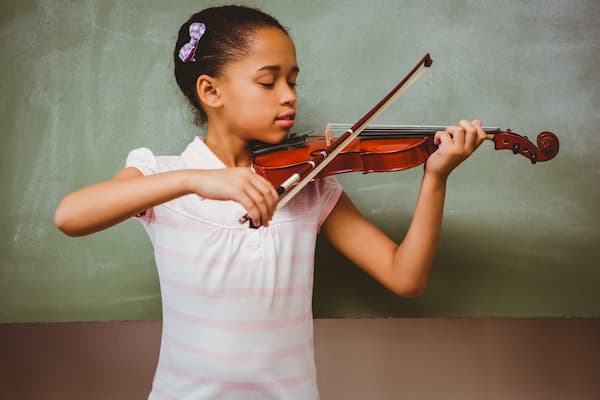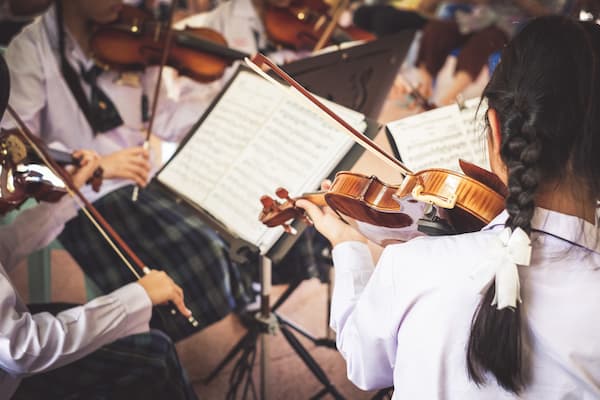The violin is an incredibly beautiful and dynamic instrument that has been around for centuries. Although it has a beautiful sound, playing the violin can be considered a workout. According to a research study, playing the violin burns around 170 calories per hour! The violin is a rewarding experience that can bring joy into your life. Once you get started, you’ll find yourself drawn in by its beauty and captivating sound.


Thinking that the violin and fiddle are two different instruments is a common misconception. They are the same instrument, but represent different styles of music and different playing techniques.
Here are a few options:
The general guidelines are:
Tuning is a skill learned in time. Most beginners will start with fine tuners at the bottom of the instrument. Once becoming more comfortable with the pegs, they can be used to tune as well. The pegs take some skill to know how to turn them without snapping the strings or releasing them all together. Using double stops is also a good way to tune at a more advanced level.
This can be for several reasons:
The LSOM instructor will help to guide the student in troubleshooting the problem and in producing a better tone.
When not being played, the bow should be loosened so the hair will not be stretched and has time to relax. The bow needs to be tightened in order to play but never made too tight. There should still be a curvature on the bow stick.
The rosin gives resistance on the bow. Rosin is a resin that comes from pines or plants. Without rosin, the bow will just glide across the strings, producing no sound. The bow must be rosined often. The rosin will often leave behind a small white residue on the violin. This will need to be wiped off to avoid a sticky mess on the wood.
Light rosin is generally hard and less sticky. It is ideal for warmer climates and areas with high humidity levels. Light rosin is best suited for violins and violas and creates less dust. Dark rosin is generally softer and stickier than light rosin. It is best used in cooler climates and in dry areas. Dark rosin is best suited for cellos and doubles basses and creates more dust. Violins can use dark or light rosin. It is a preference. One could use light rosin in the summer and dark rosin in the winter or whichever is best suited to the player.
With the school being conveniently located in Orange Park, it is just a short drive for our students from Fleming Island, Green Cove Springs, Oakleaf, and Jacksonville.
For those who are not local, virtual lessons are also available.

©2024. All Right Reserved. Built by Berean Web